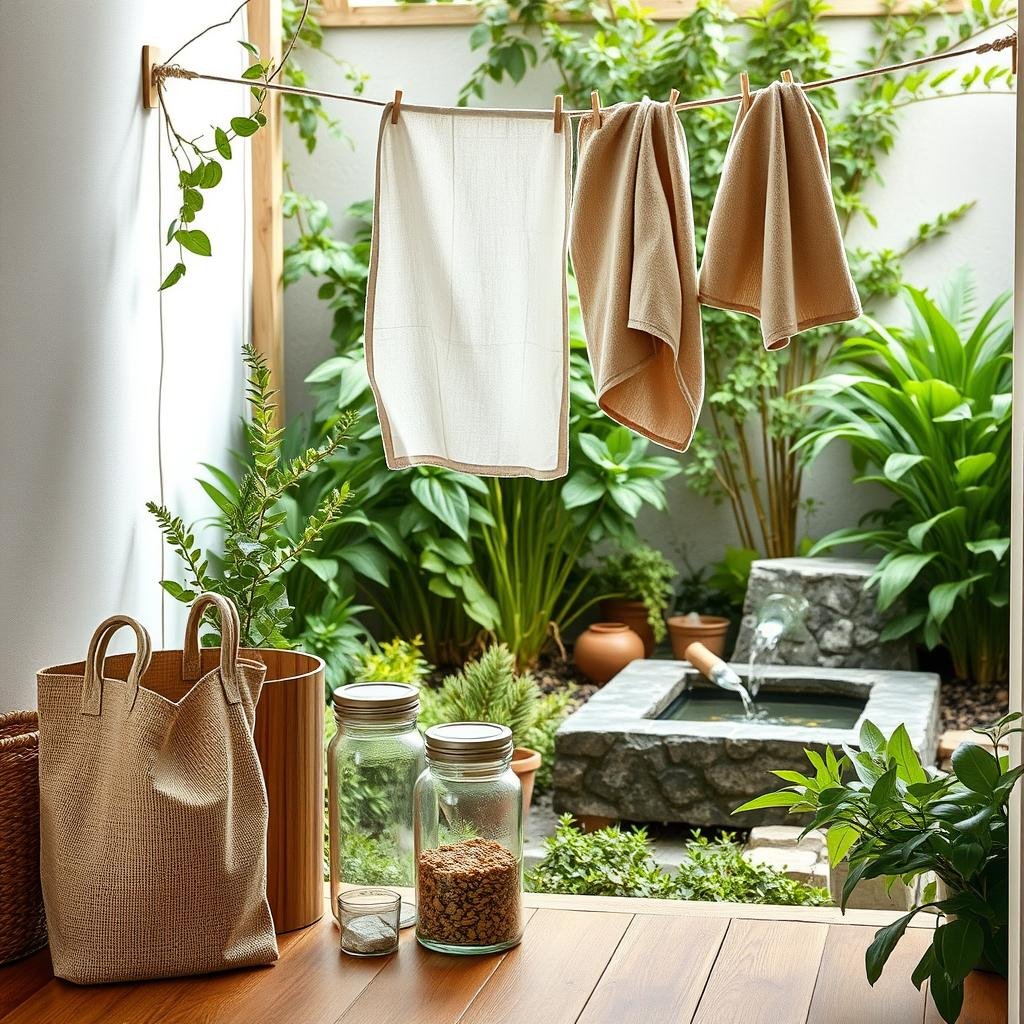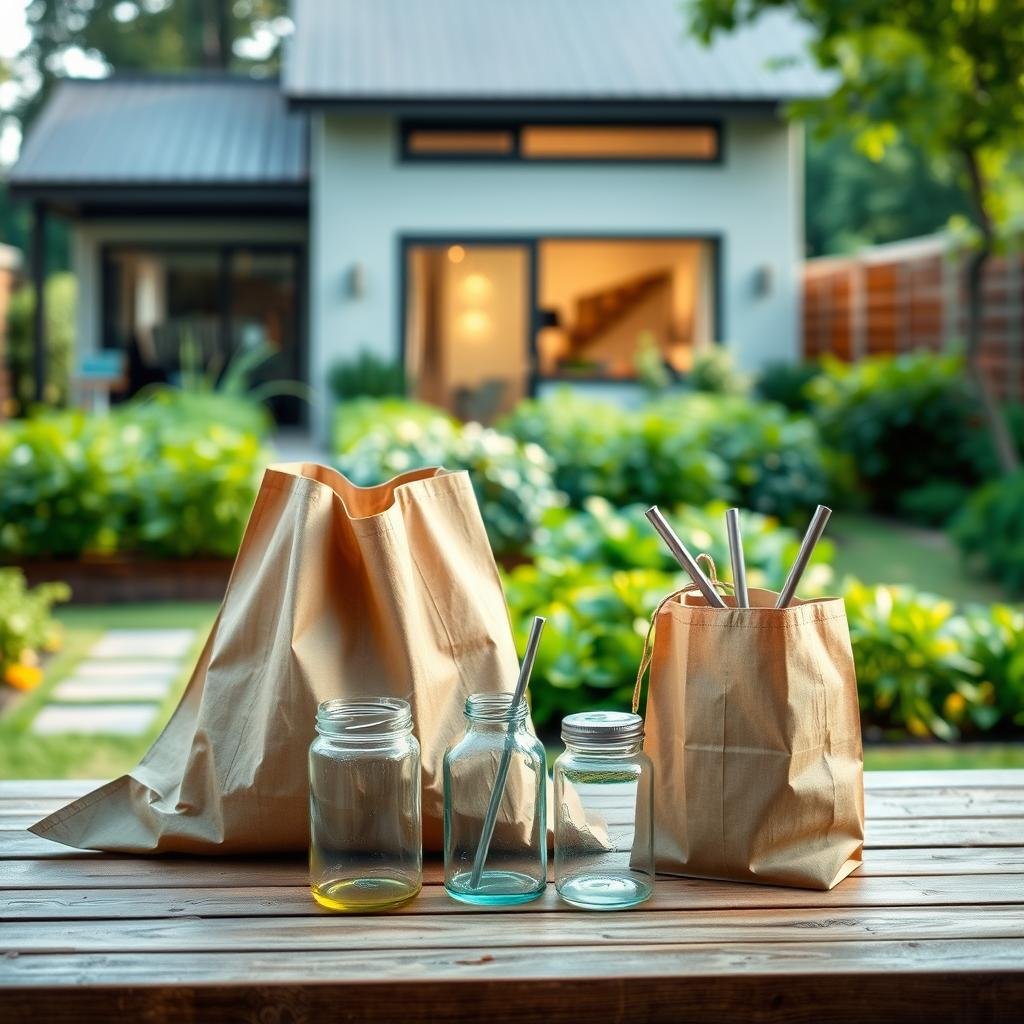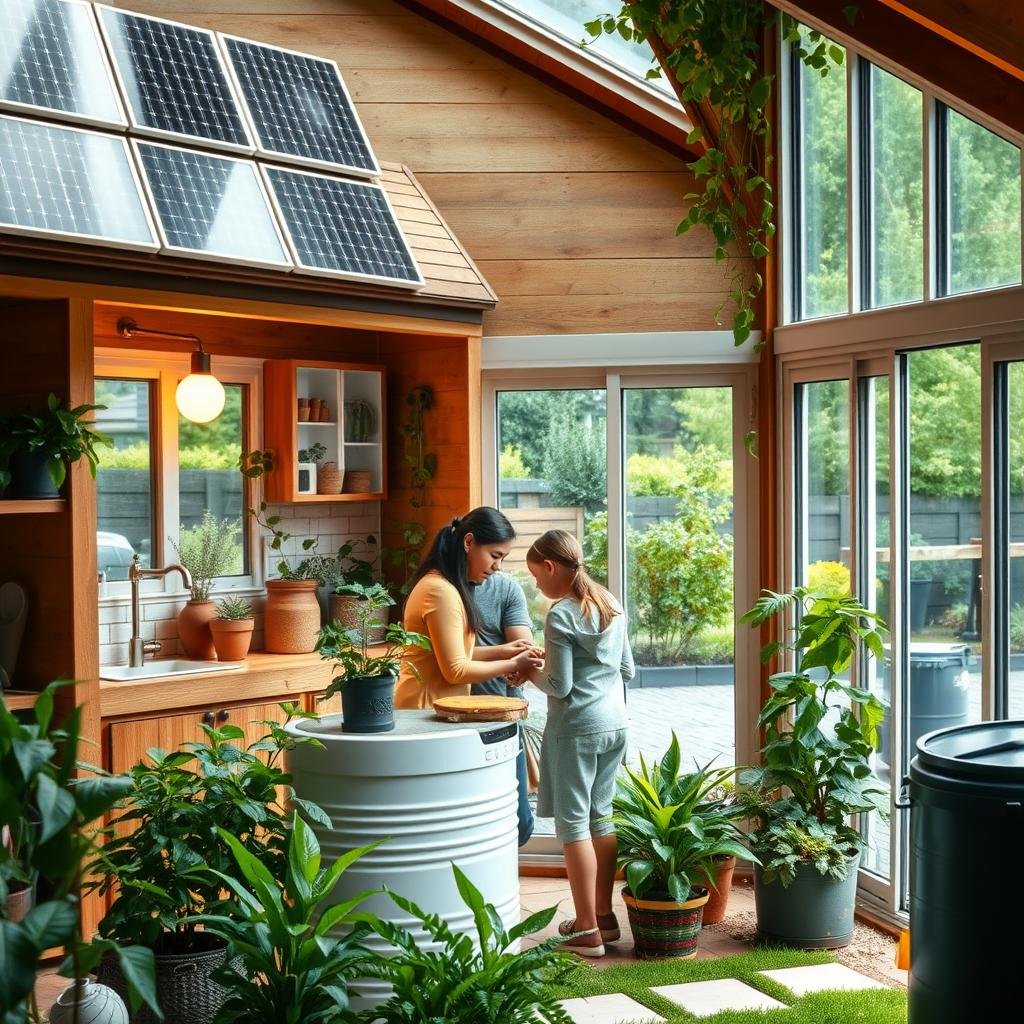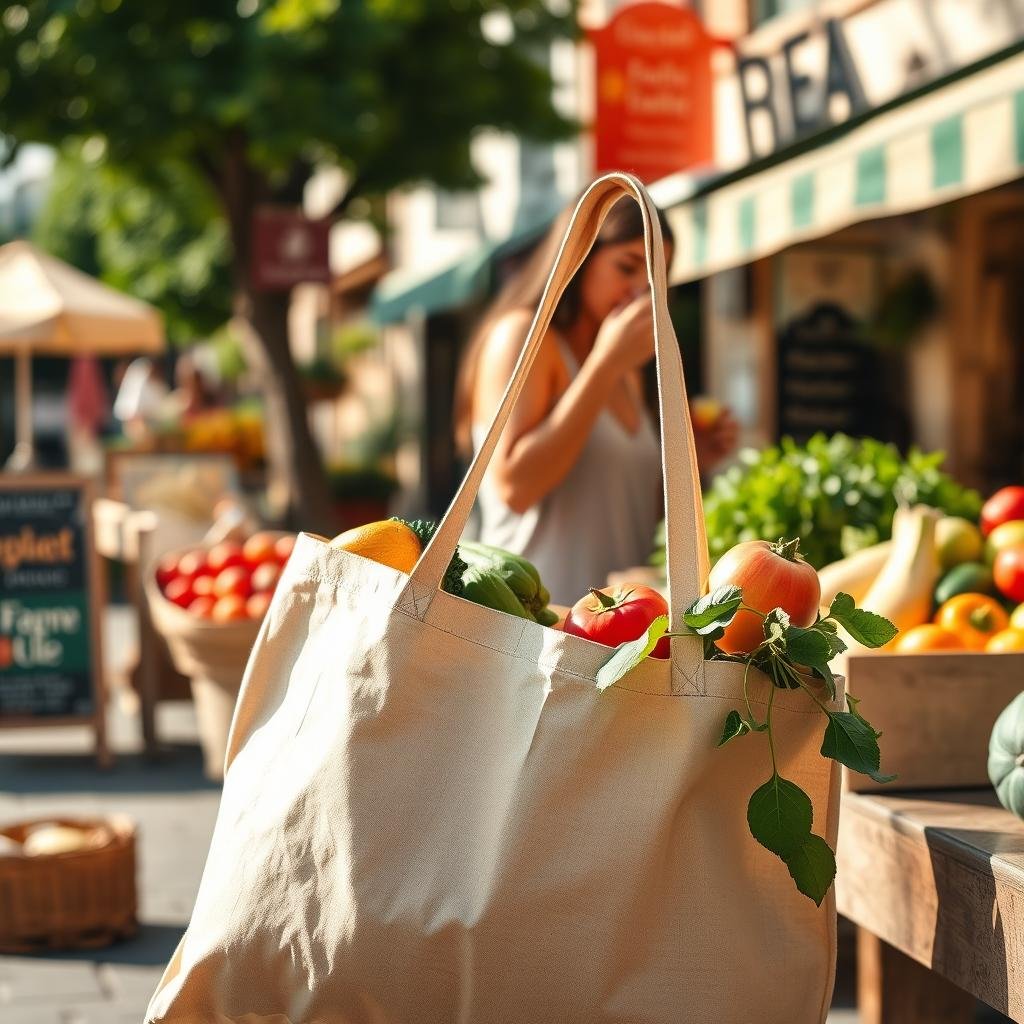Did you know the average American generates 4.9 pounds of waste daily? That’s over 292 million tons of municipal waste each year, according to the EPA. This staggering amount has a direct impact on our planet, contributing to biodiversity loss, climate change, and health issues.
The UN warns that global waste could reach 3.8 billion tonnes by 2050. This isn’t just a local problem—it’s a global crisis affecting ecosystems and communities worldwide. But here’s the good news: small steps can make a big difference.
Reducing your footprint doesn’t require perfection. Start with simple, actionable tips that fit into your daily routine. Every effort counts in protecting our environment and creating a healthier future. Let’s take this journey together—one step at a time.
Why Reducing Waste Matters for a Sustainable Future
The impact of waste reaches far beyond your trash bin. Landfills, for example, generate methane—a greenhouse gas 25 times more potent than carbon dioxide. This gas accelerates the climate crisis, contributing to rising global temperatures and extreme weather events.
Food waste is another major concern. In the UK alone, 9.5 million tonnes of food are discarded annually. This not only wastes resources but also creates methane emissions as the food decomposes. By cutting down on food waste, you can help combat hunger and lower your footprint.
Plastic waste is equally troubling. Microplastics from discarded items often end up in waterways, entering the food chain and even our bloodstreams. This pollution harms marine life and poses risks to human health. Reducing plastic use can protect ecosystems and biodiversity.
Every choice you make—whether it’s composting, recycling, or avoiding single-use plastics—has a ripple effect. These actions not only safeguard the environment but also position waste reduction as a powerful form of climate action. Together, we can create a healthier, more sustainable future.
Easy Lifestyle Changes to Reduce Waste and Live Greener
Small shifts in your daily habits can lead to big environmental wins. You don’t need to overhaul your life to make a difference. Start with these simple, impactful steps to embrace a sustainable lifestyle and help reduce your footprint.

Switch to Reusable Products
Ditching single-use items is one of the easiest ways to cut down on waste. Swap plastic wrap for bees wrap, which lasts up to a year with proper care. Reusable coffee cups can save hundreds of disposable cups annually. These small changes add up over time.
Plan Meals to Minimize Food Waste
Meal planning is a game-changer for cutting down on food waste. By organizing your meals for the week, you can save up to 23% on grocery bills, according to the USDA. Try “batch cooking Sundays” to prepare meals in advance, saving time and reducing waste.
Compost Your Food Scraps
Turn your kitchen scraps into garden gold by composting. Even apartment dwellers can use countertop compost bins. In just 2-6 months, your food waste transforms into nutrient-rich soil. It’s a simple way to give back to the earth.
- Calculate your annual plastic savings from reusable products.
- Share a success story: “How I cut food waste by 80%.”
- Explore USDA’s meal planning tips for additional savings.
These steps aren’t just good for the planet—they’re good for you too. Start today and see how small changes can lead to a greener tomorrow.
Cutting Down on Plastic: A Key to Greener Living
Every minute, one million plastic bottles are purchased worldwide, creating a massive environmental burden. Plastic pollution isn’t just about litter—it’s a threat to our health, ecosystems, and future. The good news? You can take simple steps to make a difference.

Microplastics are everywhere—even in 90% of table salt. This highlights the urgency of reducing plastic in our daily lives. By making smarter choices, you can lower your footprint and protect the planet.
Ditch Single-Use Plastics
Single-use plastics are a major contributor to pollution. Items like straws, utensils, and bottles often end up in landfills or oceans. Swap them for reusable products like stainless steel straws or bamboo utensils. These small changes can have a big impact.
Did you know that only 9% of plastic is recycled? The rest often ends up polluting the environment. By avoiding single-use plastics, you’re taking a powerful way to combat this crisis.
Invest in Cloth Produce Bags
Plastic produce bags are a common sight in grocery stores, but they’re unnecessary. Switch to cloth produce bags, which are durable, washable, and eco-friendly. They’re a simple yet effective way to cut down on plastic waste.
Cloth bags also have a lower lifecycle cost compared to plastic ones. They’re a smart investment for both your wallet and the planet.
Choose Plastic-Free Packaging
Many products come wrapped in excessive plastic packaging. Opt for items with minimal or plastic-free packaging. Look for brands that use sustainable materials like glass, paper, or compostable wraps.
Here are some surprising sources of plastic to watch out for:
- Tea bags (many contain plastic fibers).
- Receipts (often coated with BPA).
- Chewing gum (contains synthetic polymers).
Take the plastic audit challenge: Track your plastic use for a week and identify areas to improve. Small changes can lead to a greener future.
Energy and Water Conservation at Home
Your home is a great place to start conserving resources. Small upgrades can lower your carbon footprint and save you money. Let’s explore practical ways to make your home more efficient.

Switch to LED Bulbs
LED bulbs use 75% less energy than traditional incandescent bulbs. They also last up to 25 times longer, reducing the need for frequent replacements. This simple switch can save you hundreds on your bills over time.
Here’s a quick breakdown of the ROI timeline for LED upgrades:
- Initial cost: $20 for a pack of 4 bulbs.
- Annual savings: $75 on energy bills.
- Payback period: Less than 4 months.
Fix Leaks and Install Low-Flow Fixtures
Leaky faucets and outdated fixtures waste thousands of gallons of water annually. A low-flow showerhead can save up to 2,700 gallons per year. Check your water meter for leaks and fix them promptly.
Compare showerhead flow rates to find the most efficient option. Look for models with a flow rate of 1.5 gallons per minute or less.
Use Energy-Efficient Appliances
Upgrading to Energy Star appliances can cut your energy use by up to 30%. These appliances are designed to perform better while using less power. On average, households save $450 annually with Energy Star upgrades.
Here are some strategies to maximize savings:
- Run appliances during off-peak hours to reduce demand.
- Unplug devices to avoid phantom loads, saving up to $100 yearly.
- Choose appliances with the highest energy efficiency ratings.
By making these changes, you’ll not only conserve resources but also create a more sustainable home. Start today and see the difference it makes!
Sustainable Shopping Habits
Your purchasing decisions hold the power to shape a greener future. Every item you buy impacts the environment, from production to disposal. By making mindful choices, you can support a healthier planet while saving money and resources.

Buy in Bulk to Reduce Packaging
Bulk stores cut packaging waste by 89%. They allow you to purchase only what you need, reducing food spoilage. Bring your own containers to refill staples like grains, nuts, and spices. This simple step minimizes plastic use and saves you money in the long run.
Support Local Farmers and Sustainable Brands
Local produce travels 27x fewer miles than imported goods. This reduces carbon emissions and supports your community. Look for ethical certifications like Fair Trade or USDA Organic. These labels ensure your products are made with care for people and the planet.
Choose Second-Hand or Durable Products
Thrifting extends the lifecycle of clothes by 5x. It’s a budget-friendly way to reduce waste and find unique items. For new purchases, invest in durable products that last longer. Calculate the “cost per use” to see how quality saves you money over time.
- Map nearby refill stations and farmers markets for convenience.
- Use a seasonal produce calendar to shop smarter and fresher.
- Compare fast fashion impacts with sustainable fabric benefits.
These habits aren’t just good for the planet—they’re good for you too. Start today and see how small changes can lead to a greener tomorrow.
Green Transportation: Reducing Your Carbon Footprint
Transportation is a major contributor to global emissions, but you can make a difference. The way you travel impacts the environment, from the fuel you burn to the carbon released into the atmosphere. By choosing greener options, you can lower your footprint and protect the planet.
Walk, Bike, or Use Public Transport
Walking or biking is not only good for your health but also for the planet. These zero-emission options cut down on carbon and save money. Public transit is another great choice, reducing emissions by up to 45% compared to driving alone.
For example, a flight from Bristol to Edinburgh emits 0.15 metric tons of CO2. Opting for trains or buses can significantly lower this impact. Use the EPA’s commute calculator to track your savings and see the difference you’re making.
Carpool or Invest in an Electric Vehicle
Carpooling is a simple way to reduce the number of cars on the road. Sharing rides with coworkers or neighbors cuts fuel costs and emissions. Many workplaces have successful carpool programs—join one today!
Electric vehicles (EVs) are another smart investment. EV owners save over $1,200 annually on fuel. Charging costs are often lower than gas prices, making EVs both eco-friendly and budget-friendly.
- Compare EV charging costs vs. gas prices to see your savings.
- Share bike maintenance hacks for commuters to keep rides smooth.
- Introduce “transit treasure hunts” for families to make public transport fun.
Every trip you take is an opportunity to make a greener choice. Start today and see how small changes can lead to a healthier planet.
Waste Reduction in the Kitchen
Your kitchen is a powerful place to make a positive environmental impact. By adopting a few simple habits, you can significantly cut down on food waste and create a more sustainable space. Let’s explore practical ways to make your kitchen greener.
Store Food Properly to Extend Freshness
Proper storage can extend the life of your produce by 2-3 times. Keep herbs fresh by wrapping them in damp cloths or storing them in jars with water. Use airtight containers for grains and nuts to prevent spoilage.
Here’s a quick tip: Store apples separately from other fruits. They release ethylene gas, which speeds up ripening. This simple step can save you money and reduce waste.
Use Bees Wrap Instead of Plastic Wrap
Bees wrap is a sustainable alternative to plastic wrap. Made from beeswax, cotton, and jojoba oil, it’s reusable and eco-friendly. DIY kits cost under $15, making it an affordable way to cut down on single-use plastics.
To use, simply warm the wrap with your hands to create a seal. It’s perfect for covering bowls, wrapping sandwiches, or storing cheese. This small change can have a big impact on your footprint.
Repurpose Leftovers Creatively
Did you know that 63% of leftovers get discarded unnecessarily? Turn yesterday’s meals into today’s delights with creative recipes. Make a frittata with leftover veggies or blend roasted chicken into a hearty soup.
Here are five ideas to inspire you:
- Transform roasted veggies into a savory quiche.
- Blend overripe fruit into smoothies or baked goods.
- Use stale bread for croutons or bread pudding.
- Turn cooked grains into a flavorful stir-fry.
- Repurpose pasta into a cold salad with fresh herbs.
By repurposing leftovers, you’ll save money and reduce waste. It’s a win-win for your wallet and the planet.
Your Journey Toward a Greener Lifestyle Starts Today
Your path to a healthier planet begins with one small step. Research shows that 73% of people who start small sustain their changes long-term. This means every action you take today can create a lasting difference.
Community initiatives amplify your impact by 11 times. Join local sustainability meetups or partner with a “green buddy” for accountability. Together, you can inspire and motivate each other to stay on track.
Consider taking a 30-day eco-challenge to kickstart your sustainable lifestyle. From planting trees with One Tree Planted to reducing plastic use, every effort counts. Your journey matters—start today and make the world a better place.
